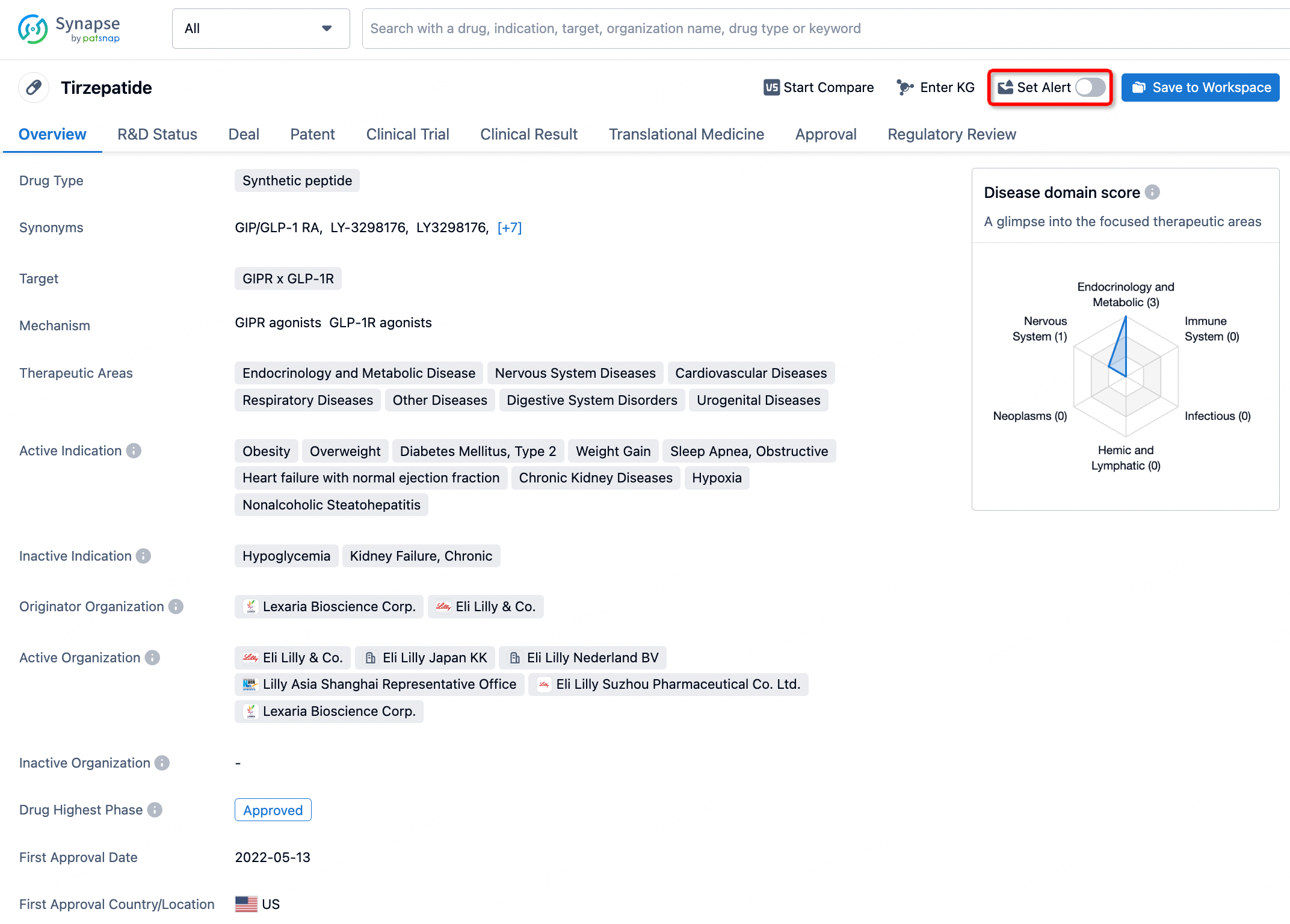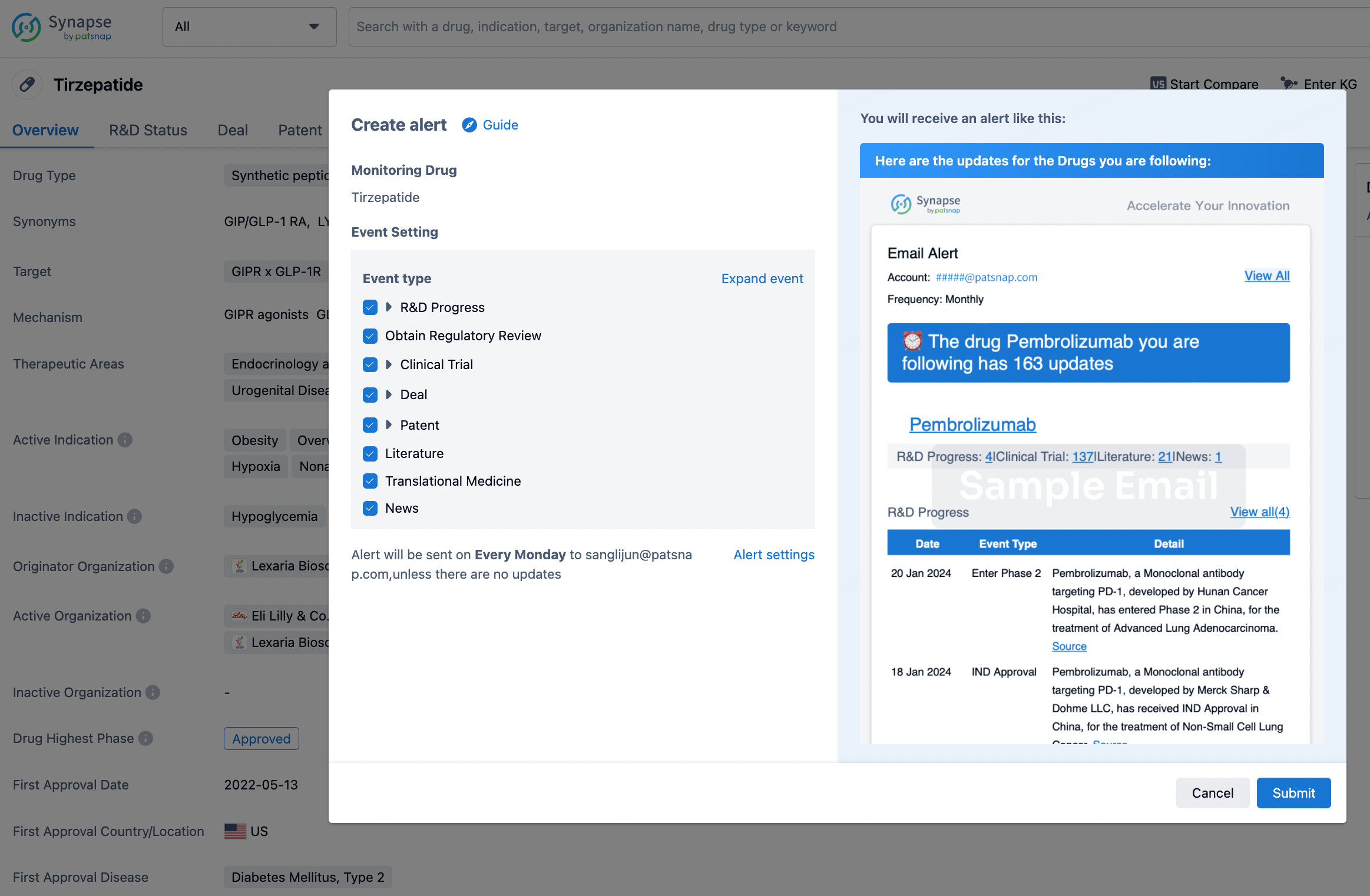Request Demo
What is the mechanism of Ufenamate?
18 July 2024
Ufenamate is a nonsteroidal anti-inflammatory drug (NSAID) that belongs to the class of anthranilic acid derivatives, commonly referred to as fenamates. It has been used for its analgesic and anti-inflammatory properties in the treatment of various conditions, such as arthritis and musculoskeletal disorders. Understanding the mechanism of Ufenamate requires an examination of its pharmacodynamics and interactions at the molecular level.
The primary mechanism of action of Ufenamate involves the inhibition of cyclooxygenase (COX) enzymes. These enzymes are crucial in the biosynthesis of prostaglandins, which are lipid compounds that play a key role in mediating inflammation, pain, and fever. Specifically, Ufenamate inhibits both COX-1 and COX-2 isoforms, thereby reducing the production of pro-inflammatory prostaglandins. COX-1 is constitutively expressed in various tissues and is involved in maintaining normal cellular functions, such as gastric mucosal protection and platelet aggregation. In contrast, COX-2 is inducible and is primarily upregulated during inflammatory responses. By inhibiting these enzymes, Ufenamate reduces inflammation and alleviates pain.
In addition to COX inhibition, Ufenamate has been shown to possess membrane-stabilizing properties. This membrane stabilization contributes to its anti-inflammatory effects by preventing the release of pro-inflammatory mediators from cellular compartments. The drug interferes with the function of various membrane-bound receptors and enzymes, thereby modulating the inflammatory response at multiple levels.
Ufenamate also affects the ion channels involved in pain perception. It modulates the activity of voltage-gated sodium channels, which are critical for the initiation and conduction of nerve impulses. By inhibiting these channels, Ufenamate reduces neuronal excitability and the transmission of pain signals. This action is particularly beneficial in conditions characterized by neuropathic pain, where abnormal nerve activity contributes significantly to the patient's discomfort.
Furthermore, Ufenamate exhibits antioxidant properties that contribute to its therapeutic effects. During inflammation, the excessive production of reactive oxygen species (ROS) can exacerbate tissue damage and prolong the inflammatory response. Ufenamate's ability to scavenge these ROS helps mitigate oxidative stress and supports the resolution of inflammation.
Despite its beneficial effects, Ufenamate, like other NSAIDs, can have side effects, primarily related to its inhibition of COX-1. These side effects may include gastrointestinal irritation, ulceration, and bleeding, as COX-1 is involved in maintaining the integrity of the gastric mucosa. Renal impairment and cardiovascular risks are also potential concerns, particularly with long-term use. Therefore, careful consideration of the risk-benefit profile is essential when prescribing Ufenamate.
In summary, the mechanism of Ufenamate involves a multifaceted approach to reducing inflammation and pain. Its primary action is the inhibition of COX enzymes, leading to decreased prostaglandin synthesis. Additionally, it stabilizes cellular membranes, modulates ion channel activity, and exhibits antioxidant properties. These combined mechanisms make Ufenamate an effective agent in managing inflammatory conditions, although its use must be balanced against potential side effects.
The primary mechanism of action of Ufenamate involves the inhibition of cyclooxygenase (COX) enzymes. These enzymes are crucial in the biosynthesis of prostaglandins, which are lipid compounds that play a key role in mediating inflammation, pain, and fever. Specifically, Ufenamate inhibits both COX-1 and COX-2 isoforms, thereby reducing the production of pro-inflammatory prostaglandins. COX-1 is constitutively expressed in various tissues and is involved in maintaining normal cellular functions, such as gastric mucosal protection and platelet aggregation. In contrast, COX-2 is inducible and is primarily upregulated during inflammatory responses. By inhibiting these enzymes, Ufenamate reduces inflammation and alleviates pain.
In addition to COX inhibition, Ufenamate has been shown to possess membrane-stabilizing properties. This membrane stabilization contributes to its anti-inflammatory effects by preventing the release of pro-inflammatory mediators from cellular compartments. The drug interferes with the function of various membrane-bound receptors and enzymes, thereby modulating the inflammatory response at multiple levels.
Ufenamate also affects the ion channels involved in pain perception. It modulates the activity of voltage-gated sodium channels, which are critical for the initiation and conduction of nerve impulses. By inhibiting these channels, Ufenamate reduces neuronal excitability and the transmission of pain signals. This action is particularly beneficial in conditions characterized by neuropathic pain, where abnormal nerve activity contributes significantly to the patient's discomfort.
Furthermore, Ufenamate exhibits antioxidant properties that contribute to its therapeutic effects. During inflammation, the excessive production of reactive oxygen species (ROS) can exacerbate tissue damage and prolong the inflammatory response. Ufenamate's ability to scavenge these ROS helps mitigate oxidative stress and supports the resolution of inflammation.
Despite its beneficial effects, Ufenamate, like other NSAIDs, can have side effects, primarily related to its inhibition of COX-1. These side effects may include gastrointestinal irritation, ulceration, and bleeding, as COX-1 is involved in maintaining the integrity of the gastric mucosa. Renal impairment and cardiovascular risks are also potential concerns, particularly with long-term use. Therefore, careful consideration of the risk-benefit profile is essential when prescribing Ufenamate.
In summary, the mechanism of Ufenamate involves a multifaceted approach to reducing inflammation and pain. Its primary action is the inhibition of COX enzymes, leading to decreased prostaglandin synthesis. Additionally, it stabilizes cellular membranes, modulates ion channel activity, and exhibits antioxidant properties. These combined mechanisms make Ufenamate an effective agent in managing inflammatory conditions, although its use must be balanced against potential side effects.
How to obtain the latest development progress of all drugs?
In the Synapse database, you can stay updated on the latest research and development advances of all drugs. This service is accessible anytime and anywhere, with updates available daily or weekly. Use the "Set Alert" function to stay informed. Click on the image below to embark on a brand new journey of drug discovery!
AI Agents Built for Biopharma Breakthroughs
Accelerate discovery. Empower decisions. Transform outcomes.
Get started for free today!
Accelerate Strategic R&D decision making with Synapse, PatSnap’s AI-powered Connected Innovation Intelligence Platform Built for Life Sciences Professionals.
Start your data trial now!
Synapse data is also accessible to external entities via APIs or data packages. Empower better decisions with the latest in pharmaceutical intelligence.


